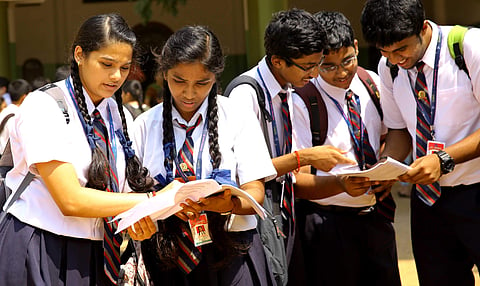

The A-F on report cards have for long been the A-Z of the overall measure of assessment of a child’s success in school. And just when teachers and administrators have slowly devised ways and means of incorporating parameters other than academics in their report cards — such as work habits, extra-curricular excellence and standards of conduct — the Central Board of Secondary Education CBSE) decided to hit them with the stamp of uniformity.
That's right. The CBSE in a circular has asked all schools to use a standard format for their report cards for students from classes VI-IX, that effectively makes it look like a carbon copy of the staid document that is handed out to X and XII graders after their public exams.
This is what the new 'standard' mark sheet will look like:
No room for extra commentary in report cards
At a time when teachers have been harping on the need for a space for comments in report cards, varying in length and thoroughness, along with the students' grades, CBSE has enforced a "uniform system of assessment, examination and report card" from class VI onwards. This, the board has clarified, is a step towards restoration of the class X Boards, beginning 2018.
This move to have uniform report cards has evoked a mixed response from parents. Ashish Naradi, a father of two children studying class in III and VIII, says the CBSE directive will not make much of a difference. "Whether it is grades or marks, both create pressure on students. Only instead of knowing that the student has secured 87 marks, he gets A2 grade. Beyond this, as for my child's social skills, I don't need a teacher to tell me about it. I am a parent and I know my child's behavior," said Ashish, who is also the coordinator of Hyderabad Parents Association (HPA).
More exams all around from 2017
Students will now be assessed on the basis of two terms, each of which will be for 100 marks — with 10 for note book submission and 5 for subject enrichment, each term. "Doing away with the summative and formative assessment, which constituted 60 percent of the evaluation, will now create a lot of pressure on the students. They will now have a lot more pen-paper style exams to get through. The focus has once again shifted to mugging and replicating it on the exam paper," said Ghazala Syed, a primary school teacher, and mother of a class VII student.
CBSE has also reasoned that the uniformity in assessment will help students migrating to other schools to get admissions easily as well as cope with the academic strain.
Works well for studying abroad
Educational consultants are psyched because this will help universities abroad streamline their admission processes when they ask for mark sheets from classes X-XII, "Uniformity in grading definitely makes it easier for us as well as the foreign universities to understand the credentials of a student. This reduces the scope of confusion to a great deal," says Santoshi from Global Tree Consultancy.
